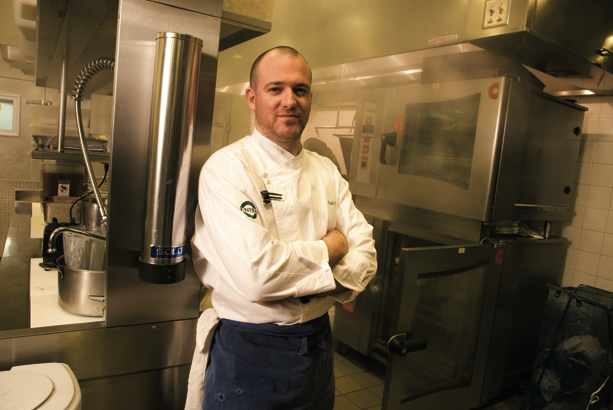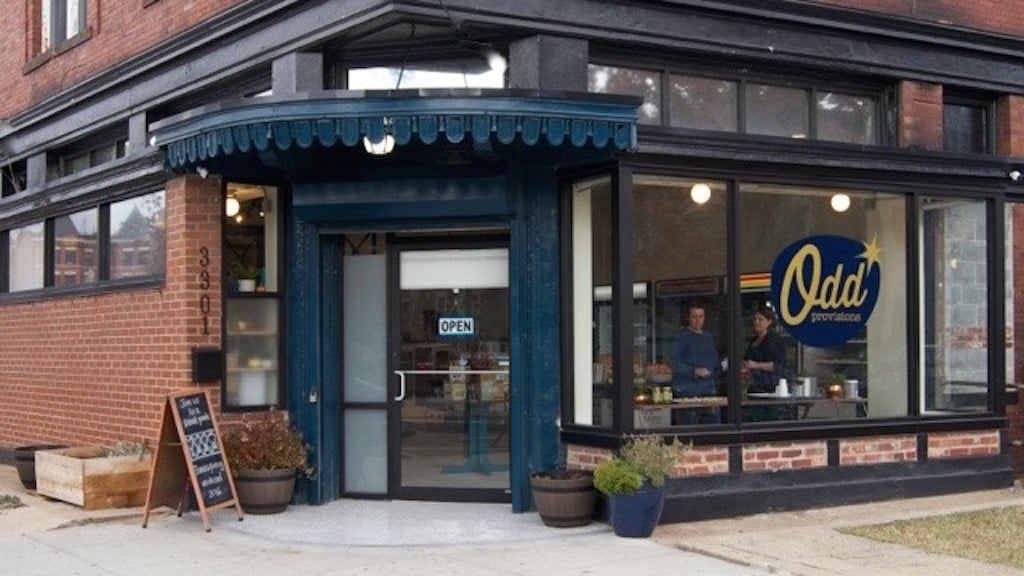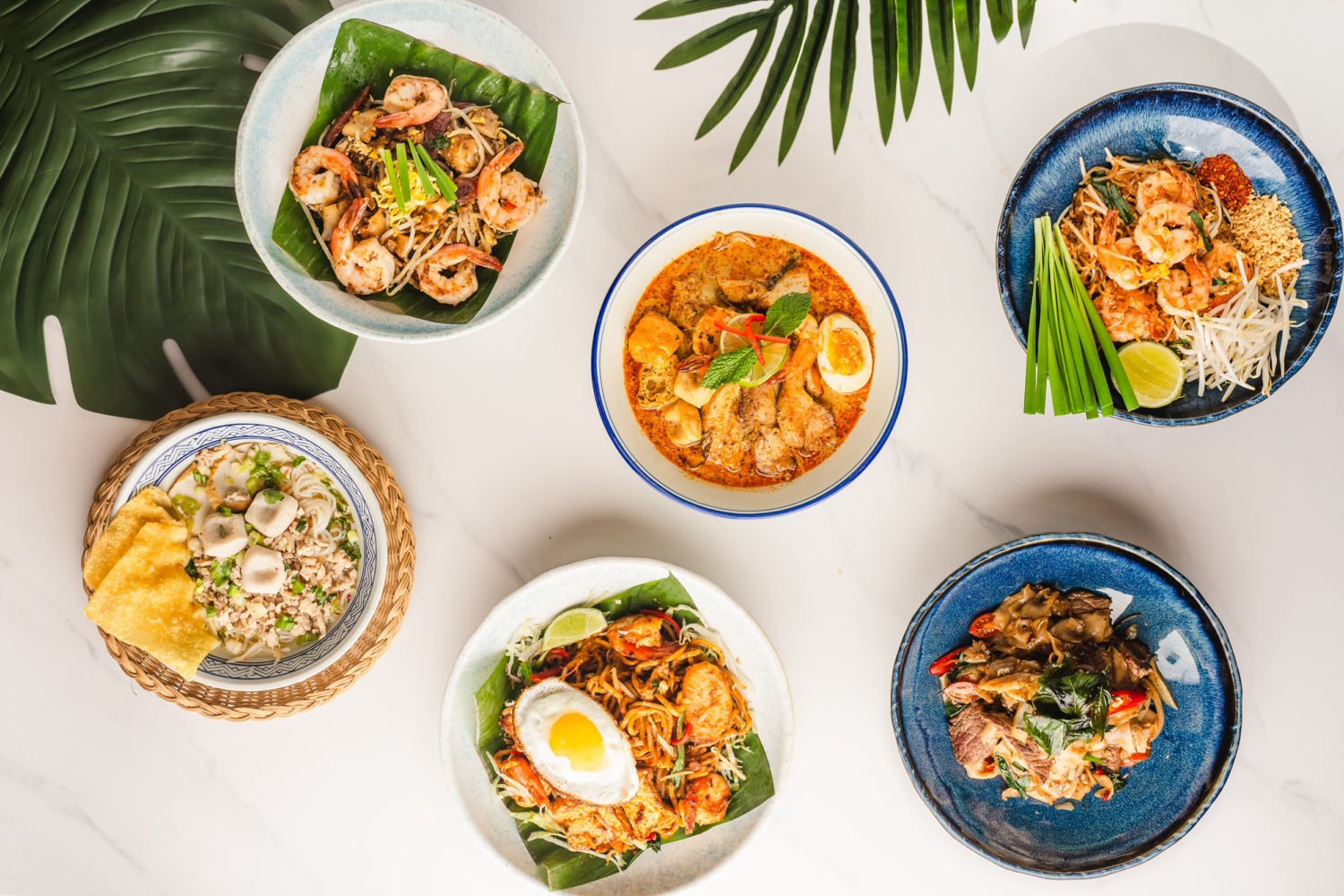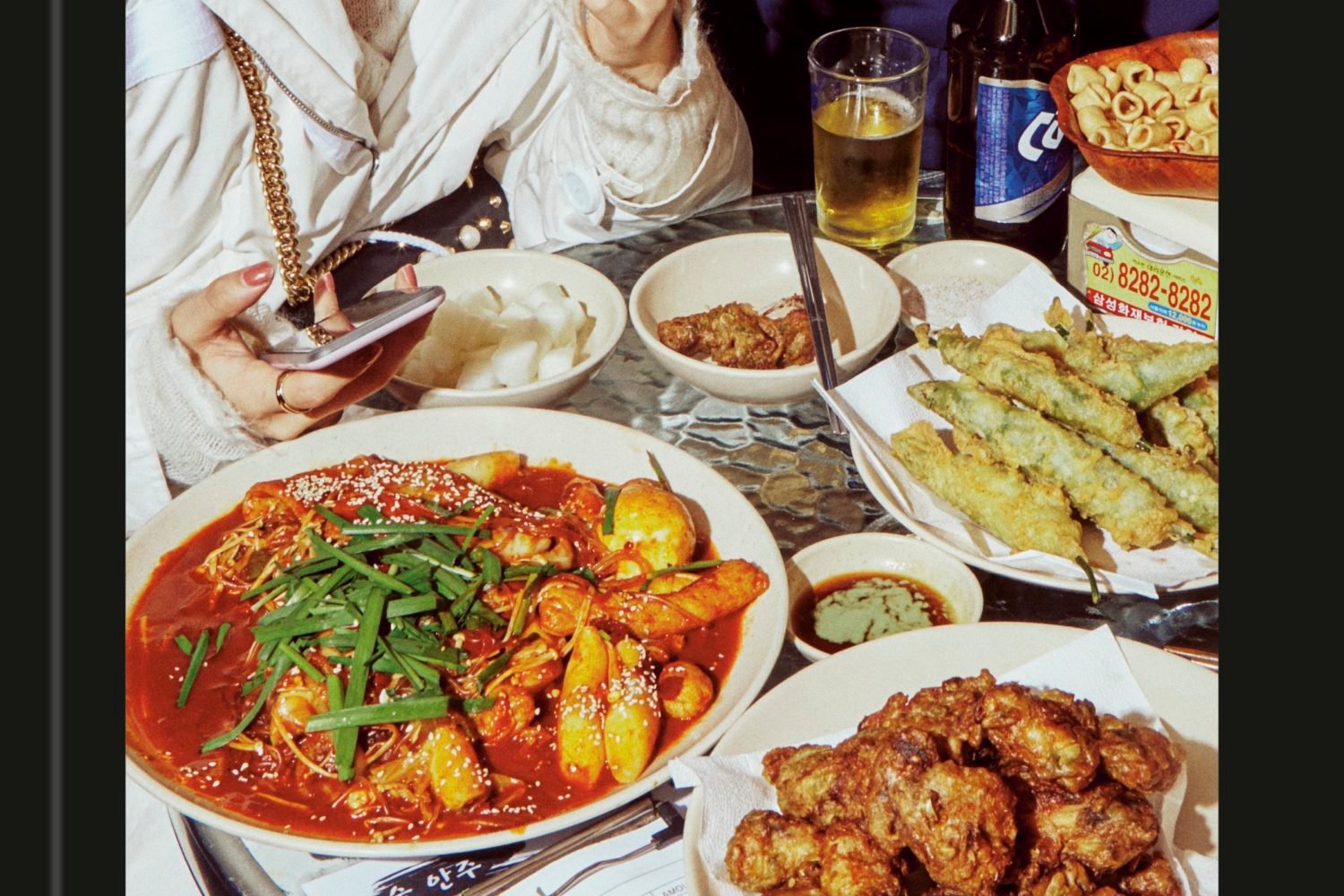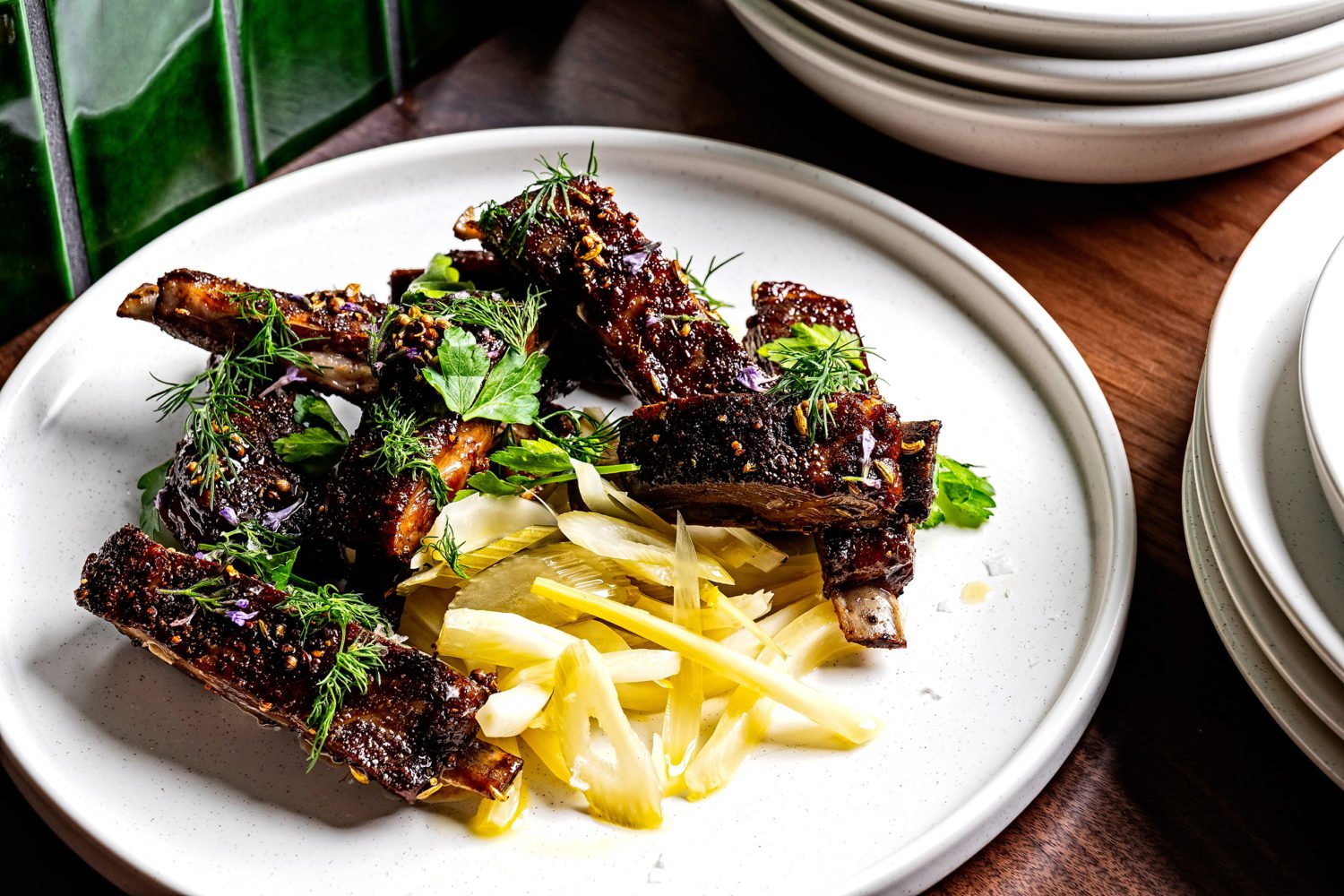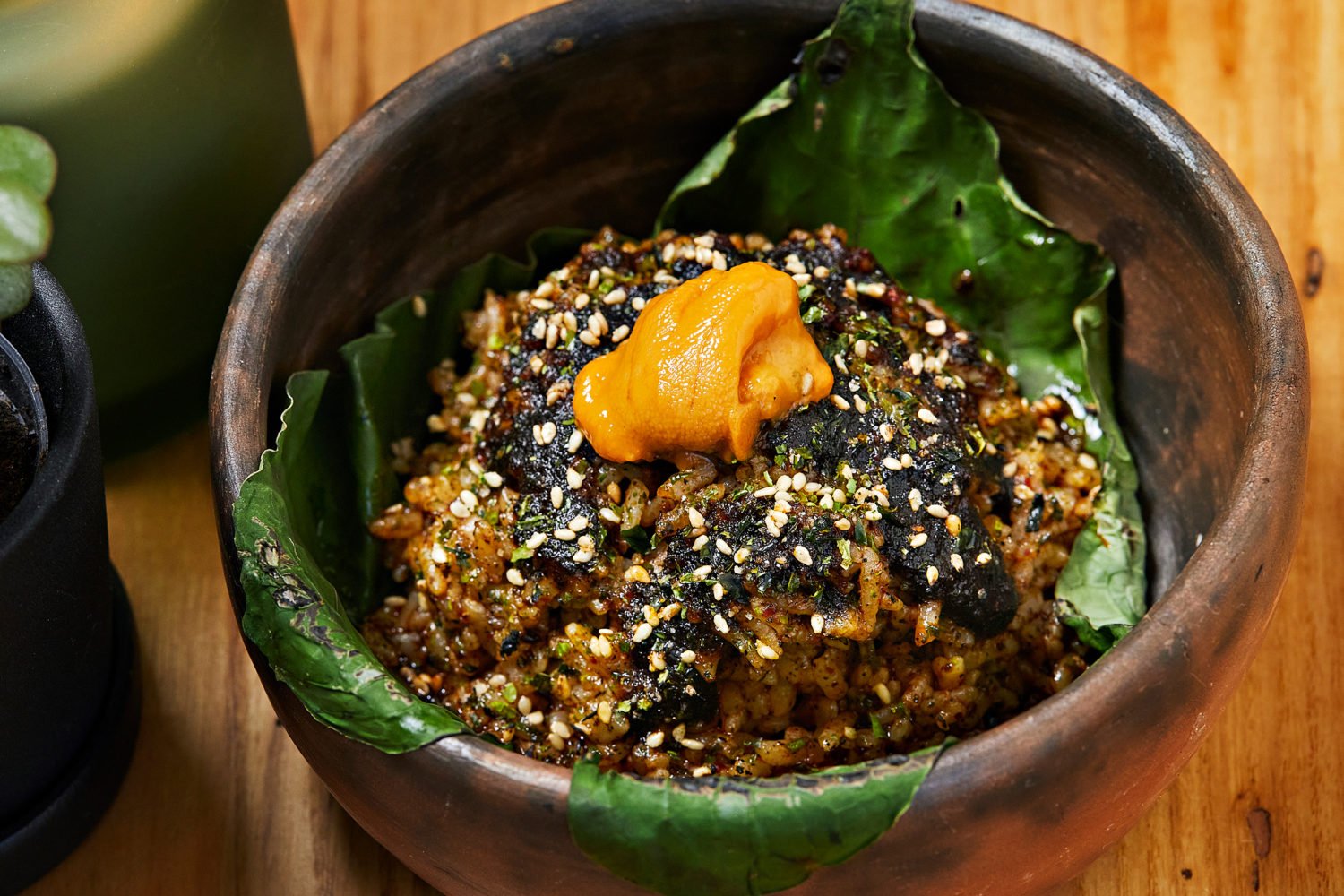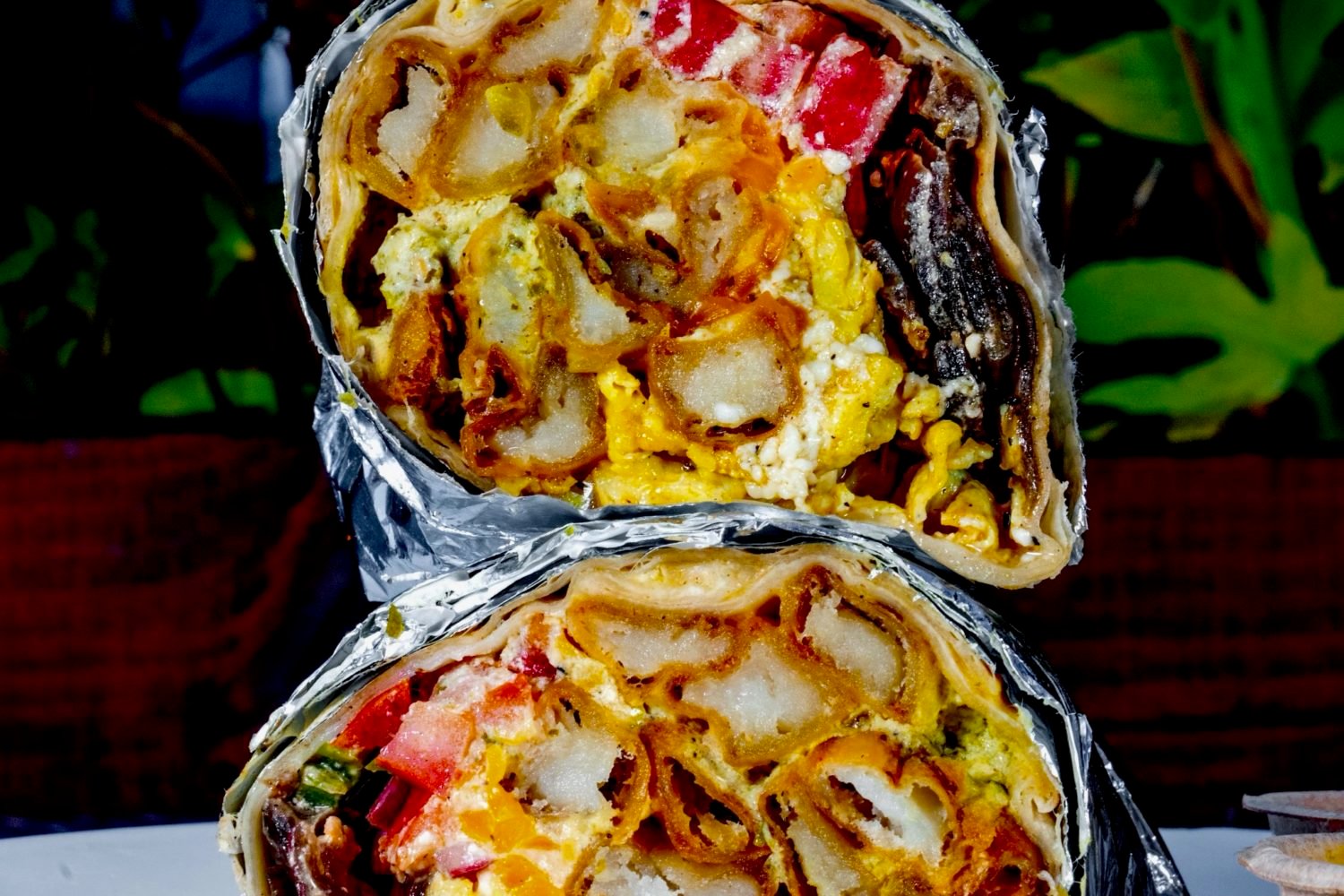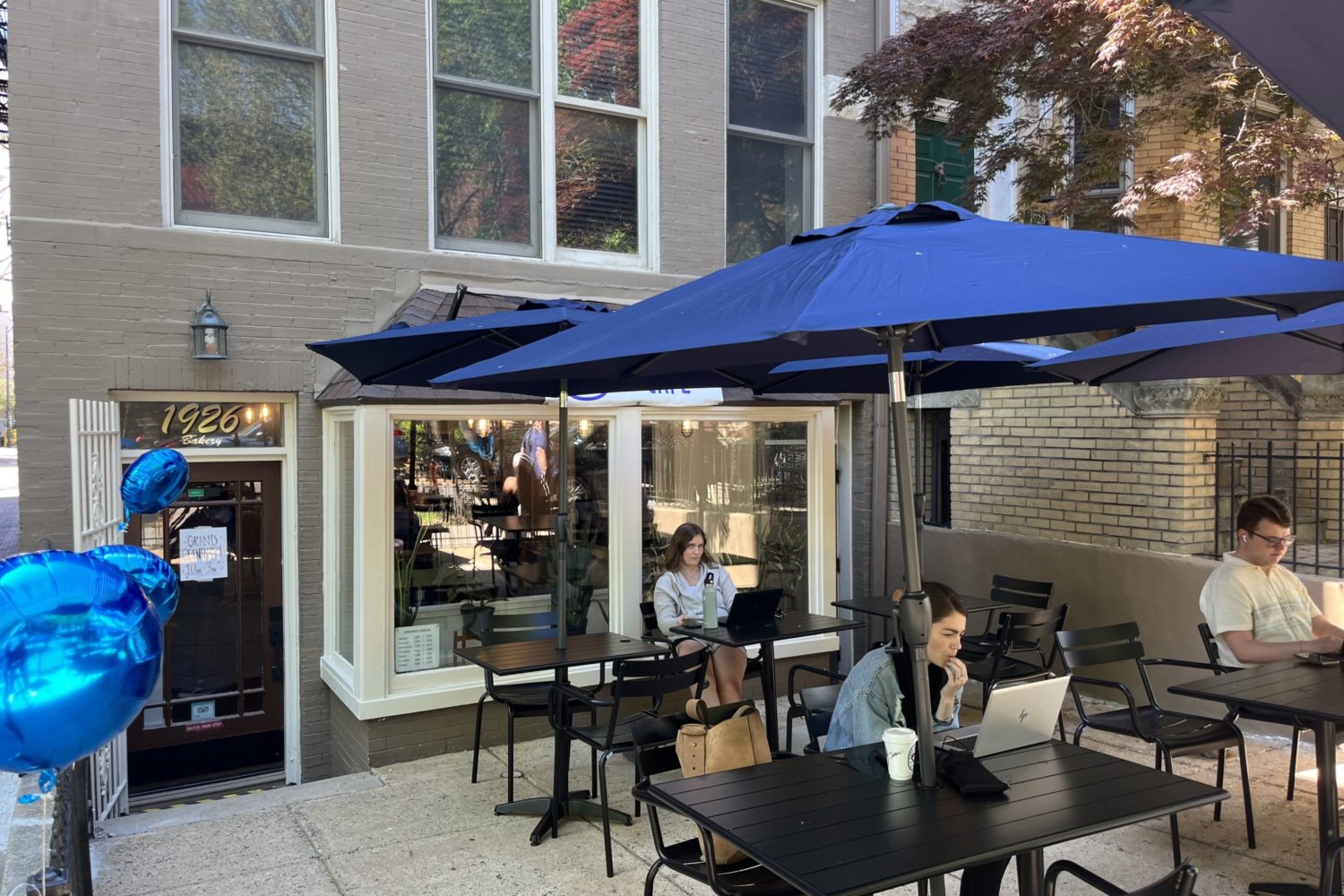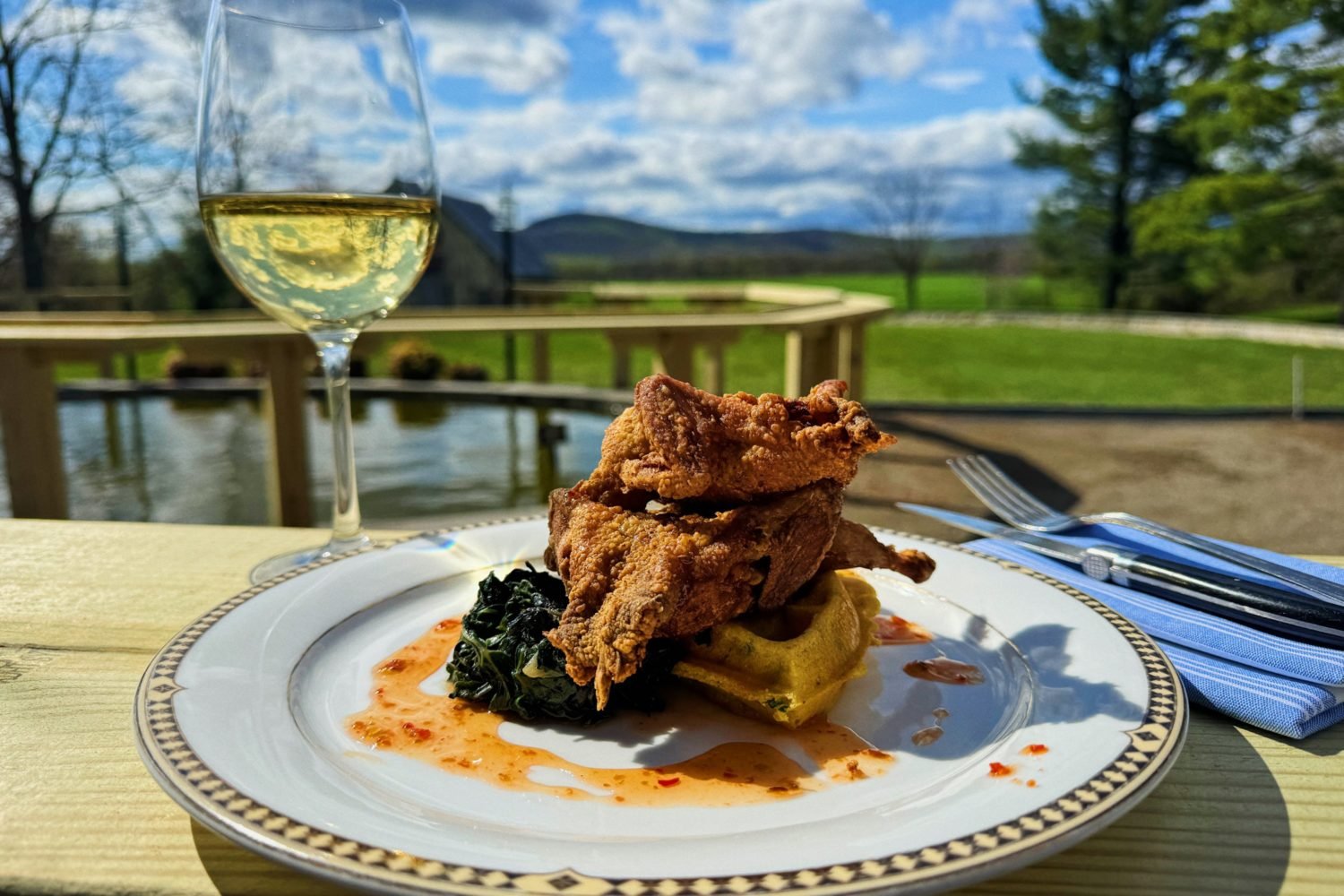Cedric Maupillier, executive chef at the DC restaurant Central Michel Richard, lives in a studio apartment and doesn’t have much time to cook: “Maybe a sandwich or a cereal bowl with milk,” he says.
Still, he has lots of ideas for his dream kitchen, which would incorporate restaurant elements. “If the kitchen is well designed,” he says, “the way you cook would be cleaner, more efficient.”
Though restaurant kitchens may not always be beautiful, they provide a model of efficiency. We asked local chefs about features and tools from their restaurant kitchens that can translate to home use.
Never Enough Counter Space
Again and again, chefs stress the importance of counter space. “Most kitchens—commercial and home—don’t have enough,” says Eric Ziebold, the James Beard Award–winning chef at CityZen in DC’s Mandarin Oriental hotel.
Ziebold recommends including a fair amount of counter space on one side of the stove: “I’m right-handed, so I tend to work toward the right, but at home my sink is on the right side of the stove. You need to have some space there if you want to take something off the stove and set it down—I can’t set it in the sink.”
Will Artley, chef at Alexandria’s Evening Star Cafe, advises against outfitting an entire kitchen with a granite countertop: “It looks great, but you can’t cut on that.” He’d incorporate a built-in cutting board (removable for cleaning), such as a wooden Boos block, often used in restaurants and butcher shops: “I love rolling out my own pasta, so I’d build a huge one into the counter.” It’s available at johnboos.com.
Cooking by Induction
For chefs, the stove is the kitchen’s most important tool. Most restaurants now use induction burners, which are flat and get hot quickly without generating extra heat. This technology has been common in restaurants for more than a decade, and chefs say it’s a worthwhile splurge for the home.
Commercial Molteni ranges are the top choice for restaurant chefs, but induction stoves for the home are available from many manufacturers, from Viking to Electrolux. Prices vary: The high-end manufacturer Diva de Provence sells a four-burner induction cooktop for about $2,400; GE Monogram’s version is $1,849 to $2,149. Kenmore Elite has a four-burner model for $1,800; by comparison, its four-burner gas and electric cooktops run about half that price.
“You can touch it and it won’t feel hot,” says Haidar Karoum, chef at Proof in DC’s Penn Quarter. “But you put on a pot of water and it’s boiling in about a minute.”
A French-top range—often called French eyes—is a flat induction cooktop with graduated heat. The center (the eye) of the stove is the hottest part; for lower heat, just move a pot or pan farther from the middle.
“All French restaurant kitchens have them,” Artley says. In his dream kitchen, he’d add a 48- to 60-inch flat top. French-top ranges can be ordered from Lacanche-Cote d’Or (frenchranges.com), which has a US distributor.
Any induction cooktop is easier to clean than regular burners and even smooth-top electric stoves because spilled food doesn’t cook—and burn—on it. “Just a quick wipe,” says Maupillier.
Where There’s Smoke . . .
When asked the first thing home cooks should splurge on, many chefs have the same answer: an industrial-strength hood. “Make sure the hood is strong enough,” says Ziebold. “Mine’s not, and every time I cook, the kitchen fills with smoke.”
Some major appliance companies offer restaurant-style hoods for the home, such as Viking, GE Monogram, and Kenmore Elite. GE Monogram’s professional hoods operate with a maximum venting capacity of 1,200 cubic feet per meter and cost $849 to $3,832. Nonprofessional, standard kitchen hoods (about 200 cfm) can cost less than $100.
“That’s the biggest problem with any kitchen at home,” says Maupillier. Ideally, his would have a professional hood and high ceilings.
Artley agrees: “In every house I’m in, no matter how nice, the hood system is never adequate.”
An Extra Sink—or Two
For both pro and amateur chefs, efficiency in cleaning up is just as key as streamlining the cooking process.
“It’s very important to have a place where you wash that’s separate from cooking space,” says Maupillier. In a restaurant, the dishwashing area is located away from the cooking space. He’d incorporate two or three sinks so that dirty dishes are separate from freshly washed produce.
Says Artley: “You need a three-compartment sink—for washing vegetables, washing dishes, and rinsing.” The triple sink in his Evening Star kitchen is made by Eagle (eaglegrp.com).
While other chefs agree on a separate dishwashing area, they would put an extra sink or water source close to the stove for filling pots. “In the restaurants, we have a spray nozzle so you can put water right into the pot without carrying it over to the sink,” says Jamie Leeds, chef/owner of Hank’s Oyster Bar in Dupont Circle and Old Town as well as the new CommonWealth in DC’s Columbia Heights.
If you don’t have the space for an extra sink, Leeds suggests a deep one with a looped faucet that large pots can sit underneath.
It doesn’t have to be industrial-looking. “It’s always difficult to clean pots at home,” says Bertrand Chemel, chef at 2941 in Falls Church. “You can have an elegant-looking sink—just make it deeper.”
Where to Put the Trash
Maupillier says trash placement is important: “I’m going to the trash often. I don’t want to move from my cooking space to reach my trash.” He’d build a chute into the countertop or below it: “Just a little square where you can push the trash in. I don’t want it behind a door that I have to open all the time.”
Fridge Solutions
Anyone who has hosted a big dinner party understands the appeal of extra refrigerator space. Chefs are used to large walk-ins, so regular ones can seem tiny and disorganized to them.
“My dream would be to have a very small walk-in at home,” says Chemel. “My normal fridge is so small that I can’t even fit a half-sheet tray in there. It’s not very efficient to find things.”
If there’s no space for a walk-in, Maupillier suggests a small extra fridge beneath the stove—often called a “lowboy” in restaurants. It’s convenient for storing filets of fish or meat, giving the cook easy access.
Chefs’ Favorite Gadgets
If your family loves pasta as much as his does, Liam LaCivita of Arlington’s Liberty Tavern suggests a built-in pasta cooker—an appliance that boils water quickly and has lift-out colander inserts to drain the pasta once it's cooked. Electrolux and Frymaster make several models: “It looks like a deep fryer, but instead of grease in it, there’s water. To clean it, just lift out the insert and wipe it out.”
Leeds uses a 40-gallon, all-purpose Swiss braiser made by the restaurant supplier Southbend in CommonWealth’s kitchen; she recommends a smaller version for the home. This large frying pan with deep sides and an attached lid is good for braising—a method in which meats or vegetables are seared at high heat, then slow-cooked in liquid until tender—but it can do much more. Says Leeds: “You can braise in it, you can roast in it, and it’s a giant sauté pan.” Le Creuset makes a smaller, home-friendly version—called a braiser casserole—in 3½- and 5-quart sizes ($190 to $230 at Williams-Sonoma).
For the home cook who has everything—including, perhaps, a bottomless bank account—there’s Maupillier’s favorite new tool: the “combi” oven, a kind of convection oven that combines steam and hot air. “It can poach, it can roast, it can slow-cook for a long period of time,” Maupillier says, adding that it can be custom-installed anywhere, including in residential kitchens. He uses the Convotherm combi oven made by Cleveland (clevelandrange.com; $9,899 to $37,351) to prepare Central’s 72-hour short ribs, and the temperature is precisely controlled by a computer.
“This oven is magic,” he says. “You can poach eggs without breaking the shell.”
For cooks who like to entertain, Artley suggests pull-down heat lamps over a countertop or island: “You’d have your little island where you keep your appetizers hot and adjust the lamps as you need to.” At Evening Star Cafe he uses lamps by Cres Cor, which can be ordered from restaurant-supply sites such as Restaurant Equipment World (restaurantequipment.net).
One tool Ziebold covets for his dream kitchen is as simple as can be: a chalkboard. “Friends of mine in Paris have chalkboard on the wall between the cupboards and the counter. You can make any notes on that if you’re in the middle of cooking. In the restaurant, I always have a yellow pad next to my cutting board. But in a home kitchen you’re always stressed for space, so you can post on the wall. I thought that was really cool.”
This article appeared in the October, 2008 issue of The Washingtonian.
Related:

